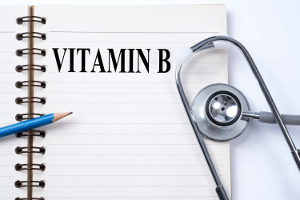Two B vitamins inhibit inflammation and scarring in non-alcoholic fatty liver disease (NAFLD)
 Non-alcoholic fatty liver disease (NAFLD) is an insidious disease that is spreading like a bushfire, and it is typically seen in connection with overweight. Many people with the disease develop a type of liver inflammation and scarring that can be potentially life-threatening. According to a study that is published in Journal of Hepatology, supplementation with vitamin B12 and folic acid (vitamin B9) can counteract the development of inflammation and scarring by lowering levels of the amino acid homocysteine. The scientists behind the study looked closer at homocysteine’s role in the pathogenicity of the disease.
Non-alcoholic fatty liver disease (NAFLD) is an insidious disease that is spreading like a bushfire, and it is typically seen in connection with overweight. Many people with the disease develop a type of liver inflammation and scarring that can be potentially life-threatening. According to a study that is published in Journal of Hepatology, supplementation with vitamin B12 and folic acid (vitamin B9) can counteract the development of inflammation and scarring by lowering levels of the amino acid homocysteine. The scientists behind the study looked closer at homocysteine’s role in the pathogenicity of the disease.
Around 25 percent of the world’s population is believed to suffer from non-alcoholic fatty liver disease (NAFLD) where fat accumulates in the liver. NAFLD is often associated with overweight and metabolic syndrome, which is an early stage of type 2 diabetes. With passing time, many NAFLD sufferers develop a type of chronic inflammation or liver inflammation called non-alcoholic steatohepatitis (NASH) that causes scarring (fibrosis) of the liver. This condition is highly critical because it impairs most of the processes in the liver. NAFLD also increases the risk of cirrhosis and primary liver cancer.
Studies have shown that having elevated levels of homocysteine in connection with non-alcoholic fatty liver disease increases the severity of the condition, while vitamin B12 and folic acid are able to reduce its severity. It is commonly known that vitamin B12 and folic acid are needed to help the body convert homocysteine into other amino acids. It is also known that elevated homocysteine levels increase the risk of oxidative stress and cardiovascular disease. Still, it remains to be shown why elevated blood levels of homocysteine play a role in the pathogenicity of NAFLD.
In the new study that is published in the Journal of Hepatology, the scientists studied how elevated homocysteine levels affected the development of non-alcoholic fatty liver disease, the metabolism, and autophagy, a process where aged or damaged cells break down their own enzymes. The researchers used study samples from humans and animals. They also added vitamin B12 and folic to see if this could alter proteins and markers of non-alcoholic fatty liver disease.
Supplements of vitamin B12 and folic acid has therapeutical potential
They discovered that serum levels of homocysteine are directly linked to inflammation and scar tissue formation in the liver. The scientists could see that certain genes that are important for homocysteine metabolism and elevated homocysteine status were dialed down in people with NAFLD. This happened by way of various liver proteins that are involved in NAFLD, including syntaxin 17 (Stx17), a protein that plays a critical role in the regulation of inflammation, autophagy, and fibrosis in connection with elevated homocysteine.
The researchers also found that vitamin B12 and folic acid:
- Promote the conversion of homocysteine into the amino acid methionine
- Lower levels of homocysteine
- Restore autophagy and Stx17 activity
- Improve liver cell function in mice with NAFLD
They concluded that elevated homocysteine levels play a key role in the pathogenicity of non-alcohol fatty liver disease (NAFL) via the Stx17 protein. Vitamin B12 and folic acid, due to their involvement in the conversion of homocysteine, may hold value as part of the future therapy for non-alcohol fatty liver disease. The two nutrients are also essential in the prevention of the disease.
- Vitamin l12 (cobalamin) is only found in animal food sources
- Many people have difficulty with their absorption of dietary vitamin B12
- Vitamin B12 taken as lozenges are easily absorbed by the oral mucosa
- Lack of vitamin B12 is often seen in combination with folic acid deficiency
Read more:
»A new view on vitamin D deficiency, fatty liver and overweight«
References:
Madhulika Tripathi et al. Vitamin B12 and folate decrease inflammation and fibrosis in NASH by preventing syntaxin 17 homocysteine. Journal of Hepatology, July 08, 2022
Li Li et al. The Association between Non-Alcoholic Fatty Liver Disease (NAFLD) and advanced Fibrosis with Serological B12 Markers: results from the NHANES 1999-2004. Nutrients 9 March 2022
Luigi Barres et al. E New Light on Vitamin D in Obesity: A Novel Association with Trimethylamine- N-Oxide (TMAO). Nutrients 2019
Search for more information...
- Created on .








